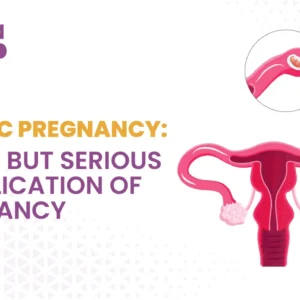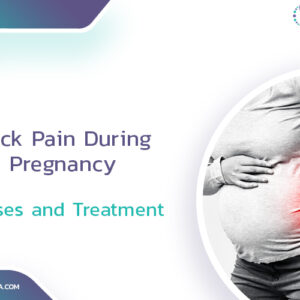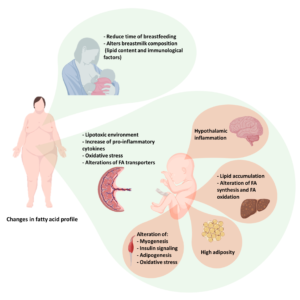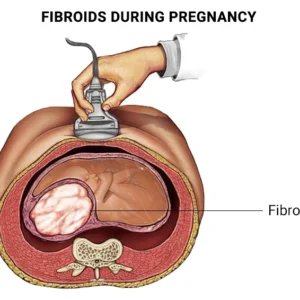Introduction
Navigating reproductive health can be complex, and one condition that often requires attention is Retained Products of Conception (RPOC). RPOC occurs when parts of the placenta or fetal tissue remain in the uterus after childbirth, miscarriage, or abortion. This condition, while not uncommon, can lead to significant health issues if not promptly diagnosed and treated. Understanding what RPOC is, recognizing its symptoms, and knowing the potential risks associated with it are crucial for anyone who has recently undergone a pregnancy or abortion. In this comprehensive guide, we’ll explore the dangers of RPOC, its symptoms, and specific concerns post-abortion, providing essential information to help you stay informed and proactive about your reproductive health.
What is RPOC
Retained Products of Conception (RPOC) is a medical condition that can occur after childbirth, miscarriage, or abortion. This condition arises when parts of the placenta or fetal tissue remain in the uterus. Understanding RPOC, its symptoms, potential dangers, and specific concerns post-abortion is essential for ensuring timely medical intervention and maintaining reproductive health.
Is RPOC Dangerous?
RPOC can indeed be dangerous if left untreated. The presence of retained products in the uterus can lead to several complications. One of the primary risks associated with RPOC is the development of an infection. The retained tissue can become a breeding ground for bacteria, leading to uterine infections such as endometritis. If this infection spreads, it can result in more severe health issues, including sepsis, a life-threatening condition.
Another danger of RPOC is excessive bleeding. Retained tissue can prevent the uterus from contracting properly, leading to prolonged or heavy bleeding. This can result in anemia or, in severe cases, hemorrhagic shock, which is a medical emergency. Therefore, recognizing the symptoms of RPOC and seeking prompt medical attention is crucial.
RPOC Symptoms
The symptoms of RPOC can vary but commonly include abnormal uterine bleeding, pelvic pain, and fever. Postpartum or post-abortion, women should be aware of any signs that might indicate the presence of retained tissue. Here are some key symptoms to watch for:
- Abnormal Uterine Bleeding: This is often the most noticeable symptom. Women with RPOC may experience heavy bleeding or bleeding that persists longer than usual. It can also include passing large clots.
- Pelvic Pain and Cramping: Pain in the lower abdomen or pelvis that is more intense than typical post-delivery or post-abortion cramping may signal RPOC.
- Fever and Signs of Infection: A fever, often accompanied by chills, can indicate an infection in the uterus due to retained tissue. Other signs of infection might include foul-smelling vaginal discharge and general malaise.
- Fatigue and Weakness: Persistent bleeding and infection can lead to fatigue, weakness, and dizziness, which are signs that the body is under stress and needs medical attention.
RPOC After Abortion
RPOC is a potential complication following an abortion, whether medical or surgical. After an abortion, it is crucial for women to monitor their health and recognize any abnormal symptoms that could suggest RPOC. Here’s what to consider:
Monitoring Post-Abortion
After an abortion, it is normal to experience some bleeding and cramping as the uterus contracts and expels tissue. However, if the bleeding is excessively heavy, lasts longer than expected, or if severe pain or fever develops, these could be signs of RPOC.
Treatment diagnostic tests and Medical Follow-Up
Clinical Evaluation
The initial step in diagnosing RPOC involves a thorough clinical evaluation by a healthcare provider. This includes:
- Medical History: The doctor will take a detailed medical history, including information about recent childbirth, miscarriage, or abortion, as well as any symptoms such as abnormal bleeding, pelvic pain, or fever.
- Physical Examination: A pelvic exam is performed to check for signs of infection, tenderness, and the presence of any retained tissue. The uterus may feel enlarged or tender if RPOC is present.
Diagnostic Tests
To confirm the presence of RPOC, several diagnostic tests may be conducted:
- Ultrasound: This is the most common and effective imaging test for diagnosing RPOC. An ultrasound can detect retained tissue within the uterine cavity. There are two types of ultrasounds that may be used:
- Transabdominal Ultrasound: This involves moving a transducer across the abdomen to create images of the uterus.
- Transvaginal Ultrasound: This involves inserting a transducer into the vagina, providing a more detailed view of the uterus and its contents.
- Blood Tests: Blood tests can help assess the overall health and identify any signs of infection or anemia. Common blood tests include:
- Complete Blood Count (CBC): This test measures the levels of different blood cells and can indicate infection (elevated white blood cells) or anemia (low red blood cells).
- Beta-hCG Levels: Measuring the levels of the hormone human chorionic gonadotropin (hCG) can help determine if there is remaining pregnancy tissue, as hCG levels should drop after a pregnancy ends.
- Hysteroscopy: In some cases, a hysteroscopy may be performed. This involves inserting a thin, lighted tube (hysteroscope) through the cervix into the uterus, allowing the doctor to directly visualize the inside of the uterine cavity. This procedure can help identify retained tissue and may also be used to remove it.
Follow-Up and Monitoring
After the initial diagnosis and treatment, follow-up care is essential to ensure complete recovery. This may include:
- Repeat Ultrasound: A follow-up ultrasound may be performed to ensure that all retained tissue has been removed and the uterus has returned to its normal state.
- Monitoring Symptoms: Patients are advised to monitor their symptoms and report any persistent or new symptoms to their healthcare provider promptly.
- Blood Tests: Repeat blood tests may be done to ensure that infection and anemia are resolved and that hCG levels have returned to normal.
A follow-up appointment with a healthcare provider is essential after an abortion to ensure that the uterus has fully expelled all the tissue. During this visit, an ultrasound may be performed to check for any remaining tissue. If RPOC is detected, the doctor might recommend a procedure such as dilation and curettage (D&C) to remove the retained products safely.
If you still have questions, click here to ask.
Emotional and Physical Recovery
Dealing with RPOC after an abortion can be emotionally and physically challenging. It’s important to seek support from healthcare providers, mental health professionals, and support groups. Addressing both the physical and emotional aspects of recovery is key to overall well-being.
Conclusion
RPOC is a serious medical condition that requires prompt attention to prevent complications. Recognizing the symptoms of RPOC, understanding its risks, and being vigilant, especially post-abortion, can help in early detection and treatment. Regular follow-up with healthcare providers and seeking medical advice at the first sign of abnormal symptoms are critical steps in managing RPOC effectively. If you suspect you may have RPOC, it is essential to contact a healthcare professional immediately to ensure proper care and recovery.






